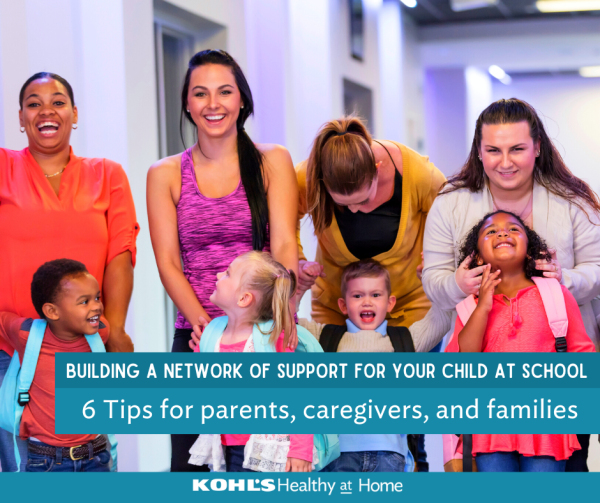March 21, 2023
6 Ways to Build a Network of Support for Your Child at School
Create and connect with family engagement opportunities in your community.
English | español
Getting involved in your school community is a great way to help your child succeed. Family engagement improves academic achievement, builds self-esteem, and increases parents’ and caregivers’ confidence in their own decision-making at home and with their child’s teachers. Finding the right way to “plug in” depends on your school’s programs, as well as your family’s interests, talents, and availability. Try these six tips to connect with school staff and other families in your community.
1. Talk about school as a family
Before and after family and community events, check in with your family, especially students. Talk about what they like about school and what they don’t like – and ask each other why. Try not to worry about solving every issue. Listening and asking questions is a great way to start. Then, when you give feedback, you will already have some thoughts to share that represent your family.
2. Talk to teachers and school staff you already know and trust
Teachers and school staff are good people to ask about attending upcoming events and offering feedback about improvements and what you appreciate about your school community. Your school might even have a team that is actively seeking suggestions or family volunteers. Staff will be more likely to personally reach out to share opportunities if they remember you’re interested.
3. Be proud of what you bring to the school community
Think of the ways your family could contribute when you have opportunities to get together to learn and support students or staff in the community. This might be a skill you’ve worked hard to develop, a natural talent, or a skill your family has passed down through the generations. You might inspire others or connect with another family who shares your interests.
4. Know your boundaries
Just like it is important to know your strengths and interests, it is important to know and communicate your availability or interest in getting involved. Consider having a conversation about these boundaries with school staff, teachers, and other families, and invite others to share what works best for them. For example, ask teachers when it’s appropriate to contact them, and if they prefer phone calls, texts, emails, or face-to-face calls, etc. Together, you can set healthy expectations that support your child’s success.
5. Be a lifelong learner
As you approach new connections, it helps to be curious and open to learning new things. For example, your school might offer a class for adult family members to learn about computers and navigate the school website or use virtual community boards. Or, they might have a language and literacy program to help build bilingual skills. You might even be able to suggest a learning opportunity to your school!
6. Invest in friendships at school
Building friendships with families at school can help you and your child create a network of friends and supportive adults. Making friends might feel intimidating, but remember, other families are looking for ways to build connections at school too. If your school does not have obvious opportunities to get to know other families, try these suggestions:
- Join a school committee that is open to caregivers and parents.
- Meet up with other families at school sports games or practices that your child enjoys.
- Set up in-person or virtual playdates with your child’s friends and their families.
- Ask school staff if you can help organize a family engagement group or event at your school.
We hope these tips help you get the most out of engagement opportunities at your school or initiate some connections of your own. If you work in a school setting or want more ideas to share with your school, check out this series of blog posts about family and community engagement and learn about being recognized as one of America’s Healthiest Schools!
Discover family-friendly resources that support whole-child health at KohlsHealthyAtHome.org and Kohl's Healthy at Home en español.


